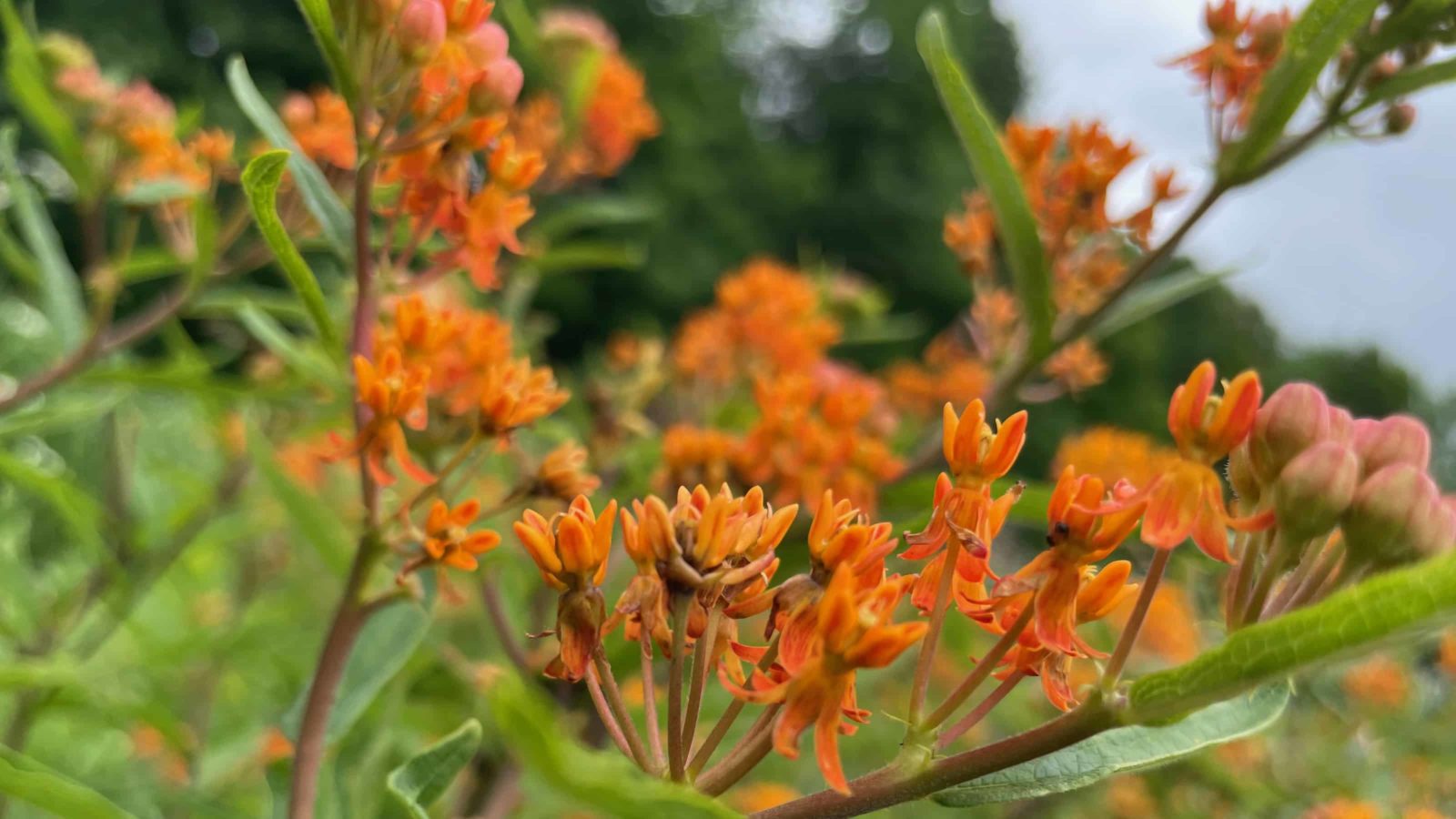The flowers are clusters of tiny blossoms, and they’re opening three feet over my head. They’re halfway to full bloom, the lower ones light filaments and the upper ones still closed in creamy beads. They trail up like mist against the darker green of the trees behind them, and I don’t know why they’re called black cohosh, but they’re some of the most poised wildflowers I’ve ever seen.
I’ve never seen them before. I’m surrounded by flowers I’ve never seen before. They’re tall and tangled and gloriously bright, And they’ve all lived in this part of the world a lot longer than I have. I’m up at Wing and a Prayer, Amy Pulley’s native plant nursery up on the ridge in Cummington, and it’s transformed in July. Amy is preserving a sea of meadow flowers, and many of them are in bloom right now all around me.

Wildflowers and native plants fill the beds at Wing and a Prayer plant nursery in Cummington.
Last time I was here, I was helping to plant seed trays. It was early April, and the fields were bare — they were beautiful, and they were spare, full of the husks of last year’s stems. Everything felt about ankle high.
Now it’s a new planet. The new growth is spilling over in the garden beds — dogwood and sunflowers, grape vines and raspberries.
Here at the front are tables of plants in pots for visitors to browse, with panels to describe where they like to live (light and moisture and soil) … and how they interact with the world. Amy and her partner, Alice Cozzolino, grow more than 300 kinds of plants up here on their homestead at Honey Hill, and most of them are native. Some feed the two of them and local families — as a chef, Alice runs a food CSA — and some feed the beings who live here, native pollinators, bees and butterflies and moths …
If you walk past the tables, you can see the working back-stage of the nursery. Here is he greenhouse where Amy starts seeds in the spring — and here are a long stretch of young potted plants in protective frames, the same wooden boxes where she will set out seed trays to overwinter — because many native plants seed themselves in the fall and need their cold rest before they will take root.
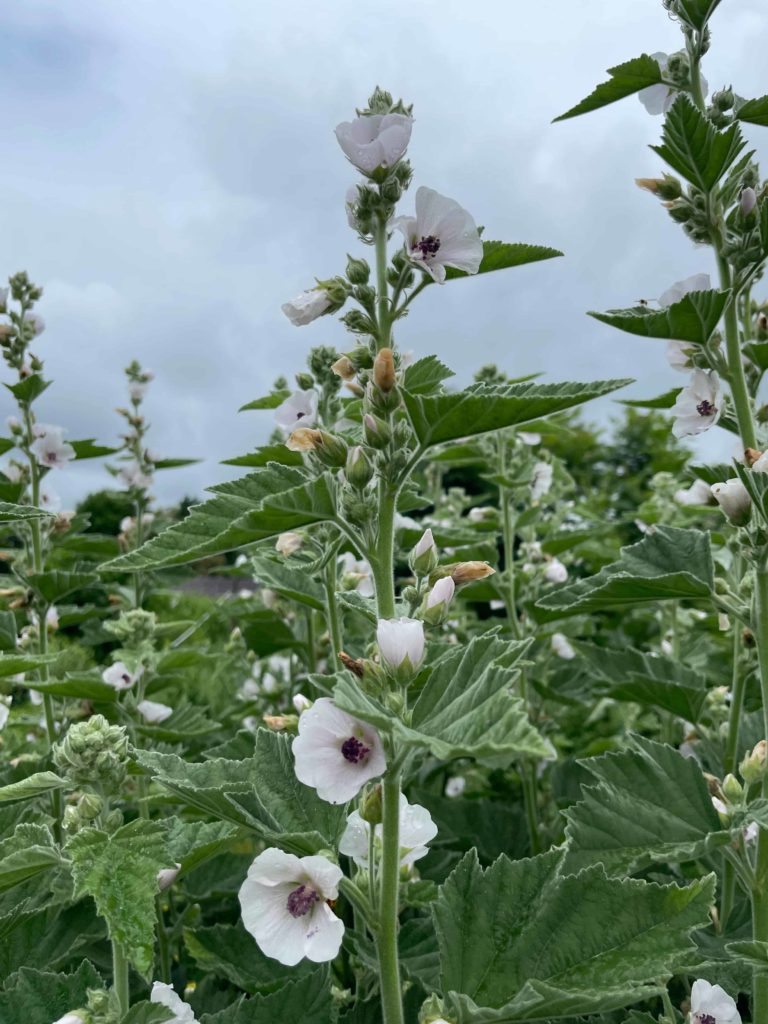
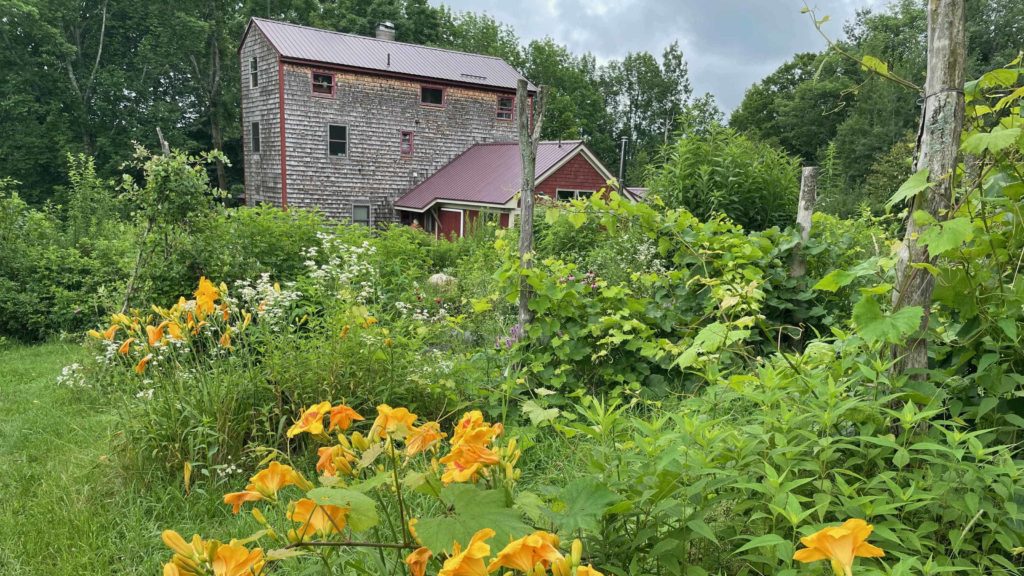
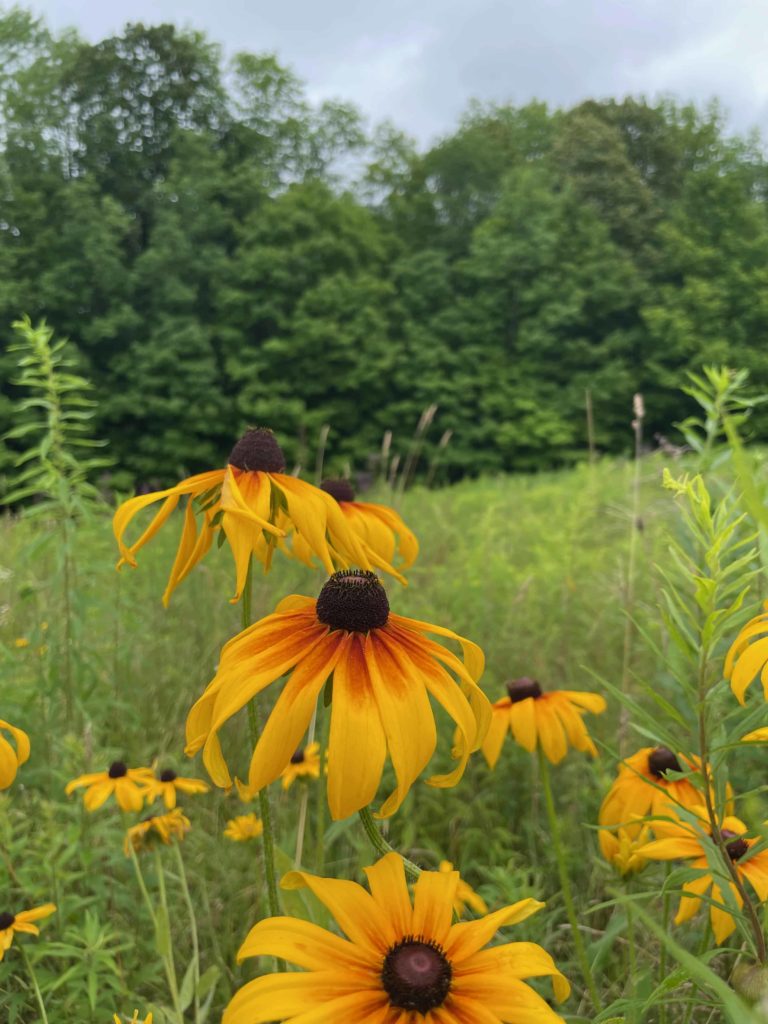

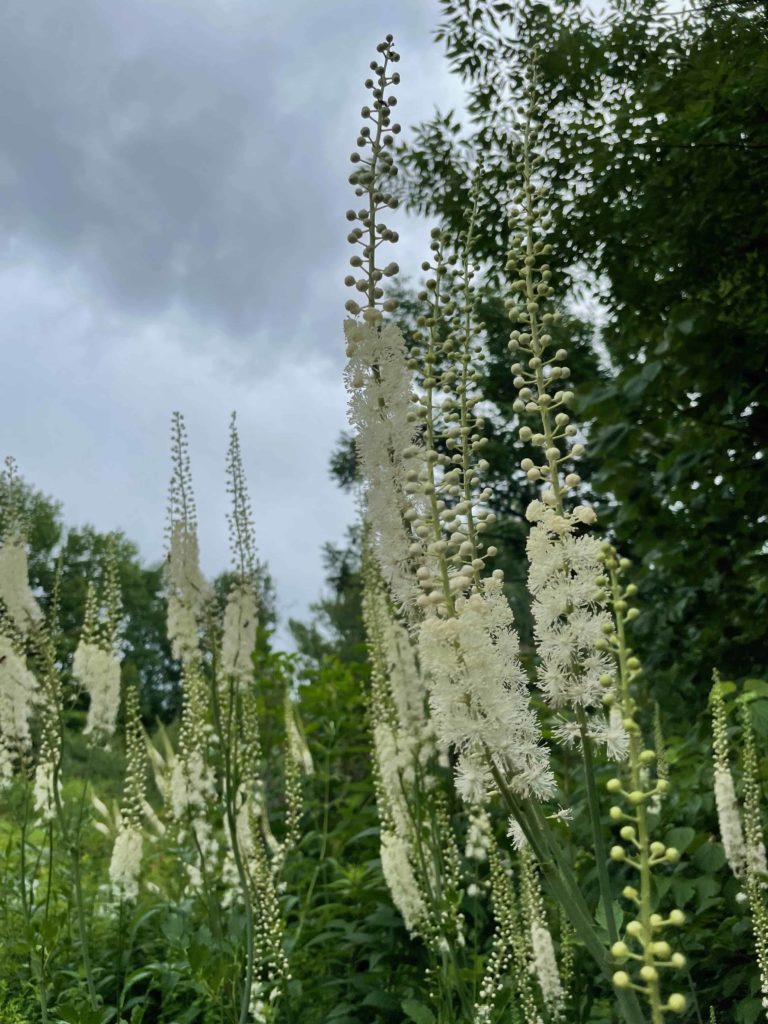
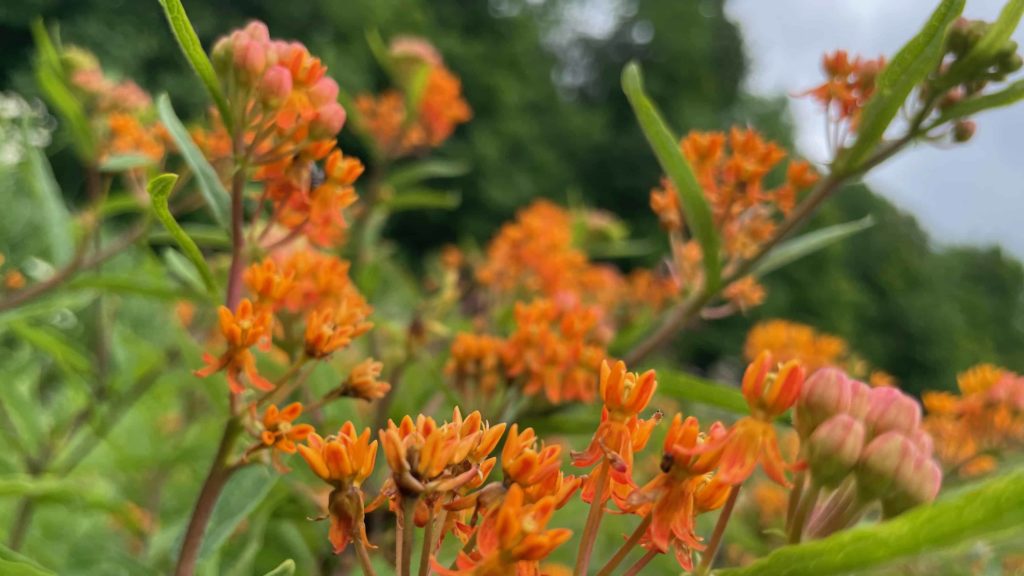

I’m walking a mown path out to the solar panels in the meadow. After the rush in late spring and early summer, these hot weeks can seem like a wash of green, and the green is lively up here — the meadow is waist-deep in leaves in all kinds of shapes and textures, and you can wade through them like a river in flood. But up here the colors are vivid.
For me they’re shoulder and head high. Amy has planted and encouraged the native flowers, and they’re out in all directions now — Black-eyed Susans in bold yellow, bee balm in crimson crowns. Spikes of tiny deep-blue flowers are moving when the air stirs. I look them up later and come up with vervain. And are those white sprays American Quinine, with their lacy five-pointed stars?
The path runs on through the meadow. The milkweed is blooming in dusky pink clusters, and I look at a flower head a few feet away to see a monarch butterfly light down. Out here at the far end of the field, Amy has planted a wild garden. She and Alice had to have the ground cleared for a new sceptic system, and it left her with a stretch of open sandy soil to play with.
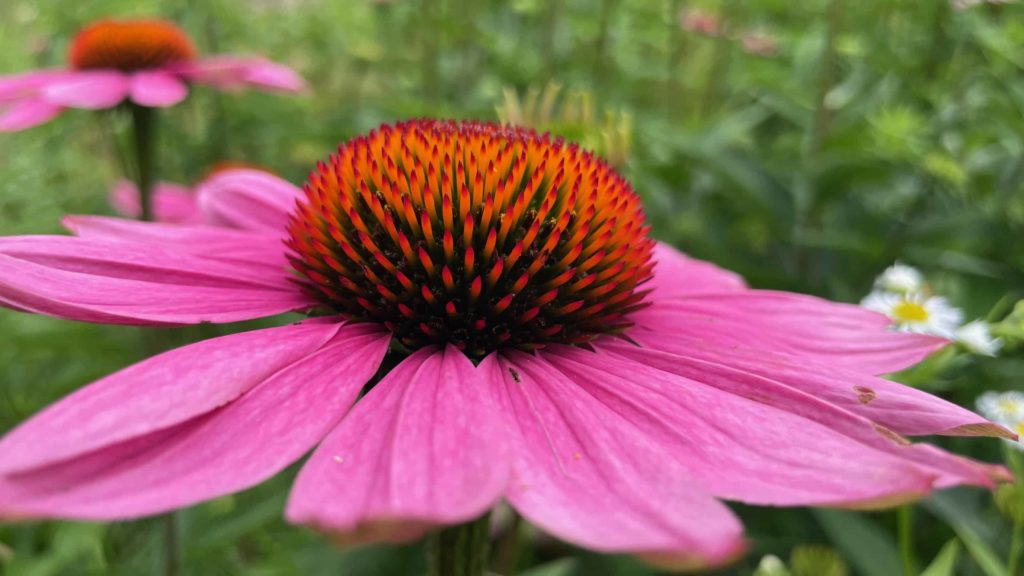
Cone flower blooms vivid pink, orange and amber in the meadow at Wing and a Prayer plant nursery in Cummington.
I walked through here three months ago, and the paths were open around the wooden bench, just winter grass and last-year’s seed heads dried in golden fans. Now the butterfly weed is vivid orange, and a swallowtail is sitting in the coneflower. The centers of those flowers are mesmerizing, domes of amber filaments, each slender as a paintbrush and tipped in deep red.
And around this corner, I’ve never seen these silvery-green spiked heads before — are they really called Rattlesnake Master? Wildflowers can have incandescent names. Now I want to know Clasping Venus’ Looking Glass, just for the sound of it. This place keeps reminding me how much I don’t know yet, and I want to know. Which plants offer nectar, and which offer pollen? Which ones feed caterpillars — and feed songbirds — and moths?
But I know more than I did a day or two ago. I know Black-eyed Susan and Brown-eyed Susan are sisters, and butterfly weed is called asclepias (in Linnaeus’ naming system), after the Greek healer … and it grows happily in full sun. I know raindrops will pool and shine in wild lupin leaves. I know that hummingbirds like beebalm, and I know what four hummingbirds sound like when they’re drinking and chattering together.

